
Pigeon
Pigeon
Pigeon
What kind of image do you have when you think of pigeons? Pigeons, which we often see in parks, stations, and cities, are very familiar birds to us. A white pigeon with an olive leaf is a symbol of peace and also a sign of good luck, so it has a good image. Furthermore, pigeons have excellent flying and homing abilities, and have been used as messenger pigeons in the field of communication since ancient times. However, pigeons are also hated as nuisance birds. Let’s find out more about pigeons, which we may think we know but don’t, and their relationship with us humans.
Pigeon Basic Infomation
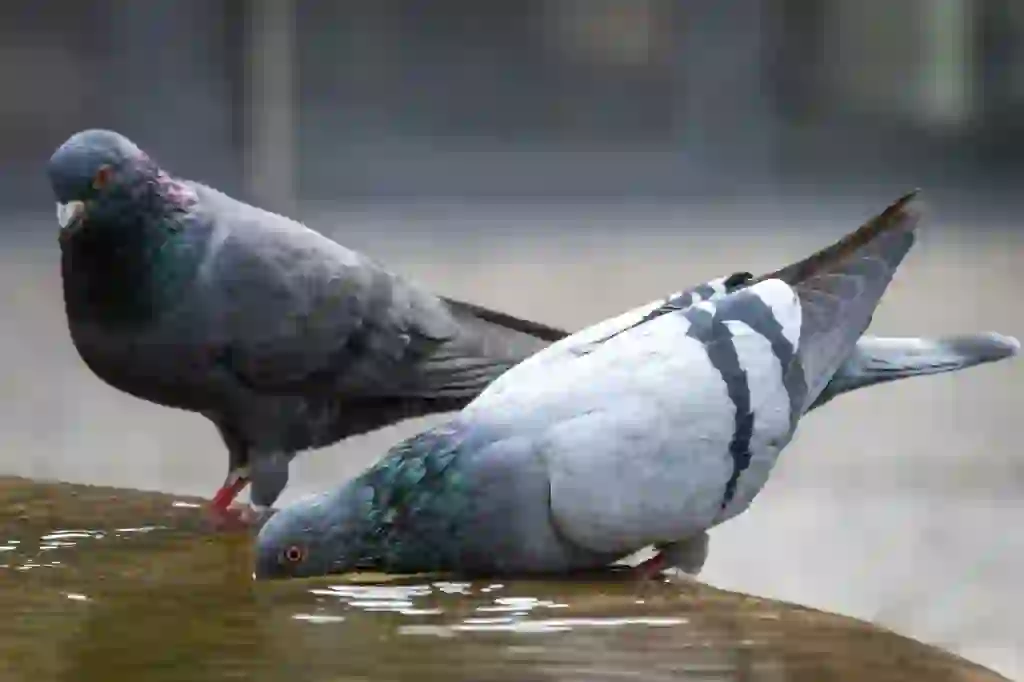
Columbiformes Columbidae.
Length : They are about 25 cm in small ones, about 33 cm in rock pigeons and ring-necked doves, and about 40 cm in large ones such as raven pigeons. Body features : Birds of the pigeon family have a sturdy body and a small head compared to their body. Their body is covered with soft feathers that grow densely, and their chest muscles are well developed.
Relationship with humans : Pigeons are thought to have been domesticated as early as the Neolithic period, about 10,000 to 6,000 years ago, and have been improved by humans over their long history, resulting in various types of pigeons.
Columba : about 40cm.
They live throughout Japan south of central Honshu. The red-headed wood pigeon that lives in the Ogasawara Islands is designated as a natural monument. Species (Japanese Wood pigeon, red-headed wood pigeon, Yonakuni Wood Pigeon, Ryukyu Wood Pigeon, Ogasawara Wood Pigeon).
Streptopelia : about 33cm. They live throughout Japan. The white dove that lives in northern Chiba Prefecture, southwestern Ibaraki Prefecture, and eastern Saitama Prefecture is designated as a natural monument. Species (Orientle Turtle Dove, Ryukyu Turtle Dove, Collared Dove *There is also a theory that the white dove is an alien species).
Treron : about 33cm. They live in Honshu, Shikoku, and Kyushu, and migrate to Honshu in the summer in Hokkaido. Species (Japanese green pigeon, Ryukyu red-bellied green pigeon, Whistling Green-pigeon).
Streptopelia : about 23-25cm. They migrate to western Japan as winter birds. They breed from central China to East Asia. Species (Red turtle dove).
Chalcophaps : about 25cm. They live in the southwestern islands south of Miyako Island. Species (Ryukyu Emerald dove).
Rock dove : about 33㎝. Found from Hokkaido to Okinawa (excluding the Ogasawara Islands).
Wild pigeons live in almost every place in the world except for some deserts and uninhabited areas such as the Arctic and Antarctic, and their number is estimated to be about 400 million.
Wild pigeons originally lived in Europe, Central Asia, and North Africa, and settled in places such as cliff recesses, but they were already domesticated (birds that were bred by humans) for food during the Mesopotamian and Egyptian civilizations, as evidenced by the cuneiform and hieroglyphic writings left by ancient people.
Humans also used pigeons’ homing instinct to use them as carrier pigeons.
Pigeon Q&A

Origin of the Name 'Pigeon'
The name 'pigeon' is thought to derive from the flapping sound made when they take off. Additionally, the Kanji character for pigeon, 鳩, consists of the parts '九' (nine) and '鳥' (bird). There's a theory that '九' comes from the cooing sound 'coo-coo' that pigeons make.
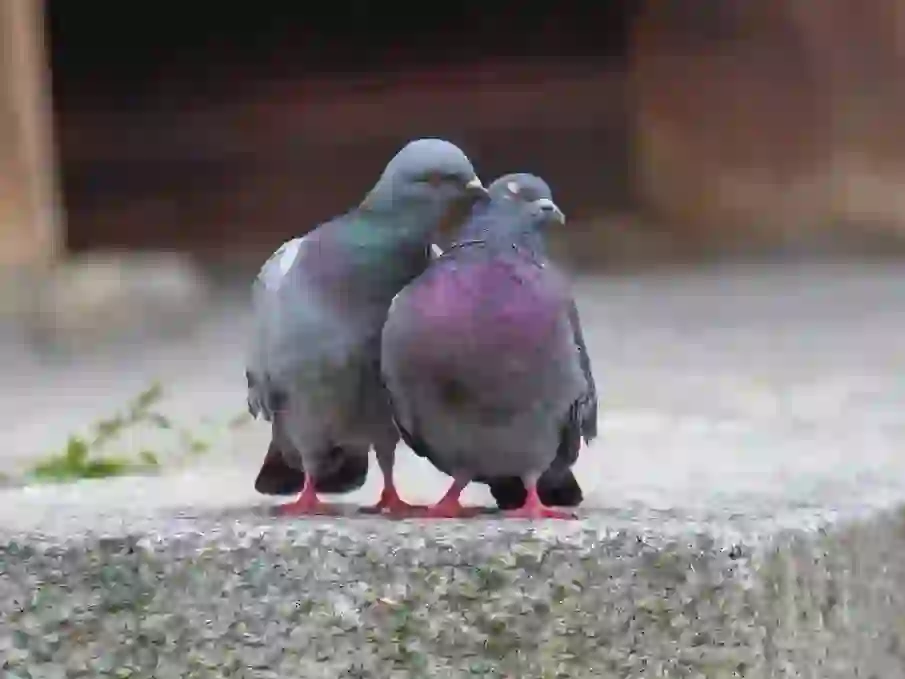
Why Do Pigeons Live There?
The pigeons commonly seen in Japan are the feral pigeon and the wood pigeon. The rock pigeon, the ancestor of the feral pigeon, was originally kept as a domestic bird in many homes but originally nested on high rocky ledges surrounded on three sides. The feral pigeon, a wild form of the rock pigeon, inhabits all over Japan and makes nests in places like buildings, bridges, and balconies where they are sheltered from rain.
The wood pigeon is distributed throughout Japan, but their numbers decrease in Hokkaido and northern Honshu during winter, being considered summer birds in Hokkaido. They inhabit urban areas, parks, and bright forests in mountains, nesting in buildings such as station buildings or trees, creating plate-shaped nests from twigs, though they also nest on man-made structures in urban areas.
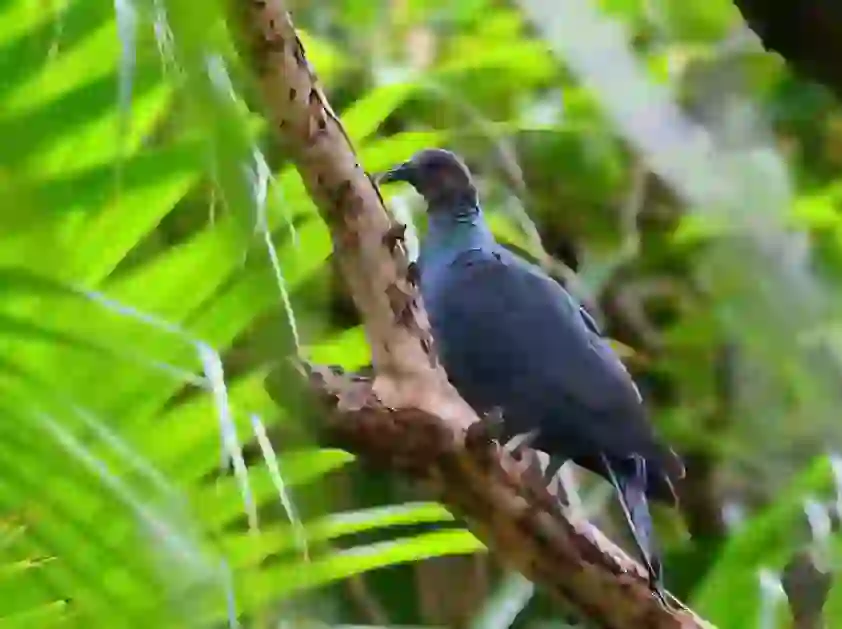
What Do Pigeons Eat?
Pigeons eat seeds of plants, grains, legumes, as well as sweets and bread crumbs found on the ground, and even stones. Surprised about the stones? Many birds, not just pigeons, eat stones and sand. These stones and sand are used to help digest their food.
Birds have two types of stomachs: the 'proventriculus' or 'glandular stomach' and the 'gizzard' or 'muscular stomach'. The proventriculus breaks down the food with acidic digestive fluids similar to a human stomach. The gizzard, also called the sand liver, grinds the food that has been swallowed whole with the stones and sand that have been ingested. Even the ancestors of birds, the dinosaurs, had stones in their stomachs.

How Do Pigeons Raise Their Chicks?
Pigeons typically lay two eggs and incubate them for 14 to 21 days. The chicks hatch and fledge within 25 to 40 days. Generally, even herbivorous birds feed their chicks animal protein like insects, but pigeon chicks are fed with a high-protein 'pigeon milk'.
This 'pigeon milk' is produced in a part of both male and female parent birds called the crop. Pigeon milk is similar to protein used by athletes and is very nutritious, so there's no need for insects! For the first few days after hatching, only pigeon milk is given, and gradually, as the chicks grow, softer food is also mixed in.
Why Do Pigeons Bob Their Heads When Walking?
There are several theories about why pigeons bob their heads when walking, but the main theory is that they are not bobbing their heads but rather keeping their heads still. This is necessary because their eyes are positioned on the sides of their head, and the scenery would appear to flow by. This is similar to looking out the window of a moving train.
Because it is difficult to see when the landscape flows by, they stick their heads out first and pull their bodies forward while keeping their head movements still. This fixes the position of the eyes for a moment, making the scenery appear stationary. There are also theories that this helps them walk stably.
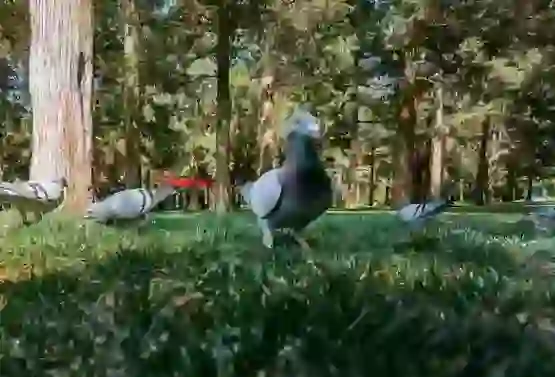
Do Pigeons Have Two Names in English, and What's the Difference?
In English, pigeons are called both 'dove' and 'pigeon'. There is no clear definition of the difference, but 'dove' is perceived as a 'clean pigeon' that is kept by people, while 'pigeon' is associated with the 'dirty pigeons' found in parks and stations. 'Dove' also signifies a white pigeon that symbolizes peace.

Why Is the White Pigeon a Symbol of Peace?
Pigeons have long been depicted as bearers of good news in literature. In the Old Testament story of Noah's Ark, a pigeon carrying an olive leaf signaled the end of the flood.
In Greek mythology, the pigeon was a beloved bird of the goddess Aphrodite, and in Judaism, it was considered ritually pure and offered to God. In Christianity, the white pigeon symbolizes the Holy Spirit.
The image of the pigeon as a symbol of peace spread globally after Picasso created a poster for the 'First World Peace Congress', which depicted a pigeon flying with an olive leaf.
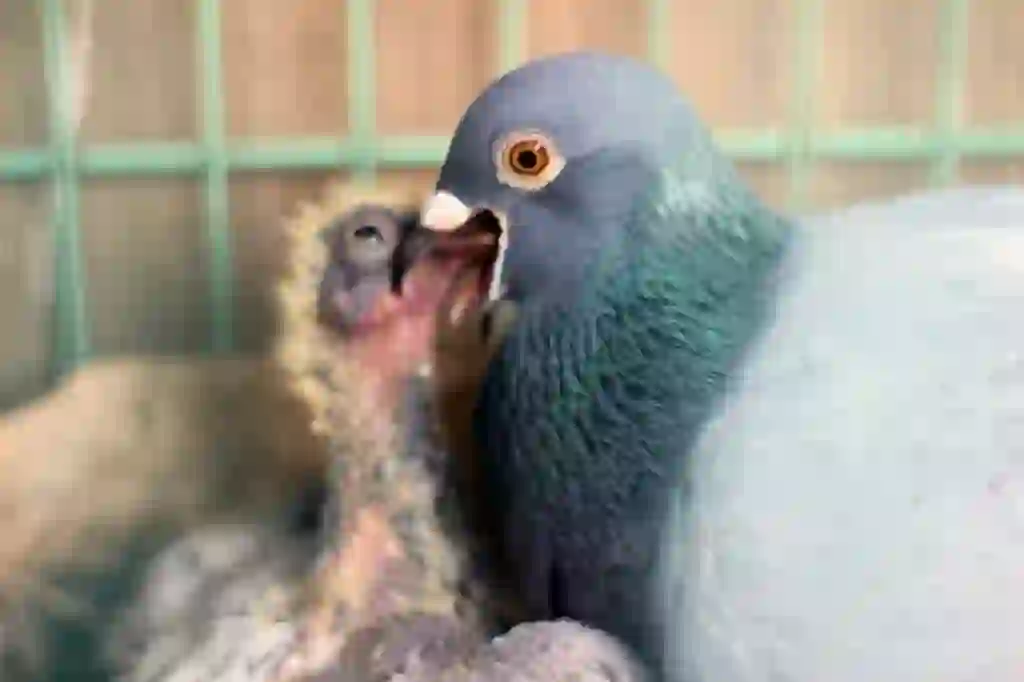
How Can Carrier Pigeons Find Their Way Home from Far Away Without Getting Lost?
Pigeons have the ability to return to their nests from distances of 1000 to 2000 kilometers, and this ability has been utilized for centuries, with pigeons serving as carrier pigeons delivering newspapers, news, and confidential military documents.
So, how can pigeons find their way back to their nest without a map or navigation? There are several theories, but the most plausible is the 'magnetic compass theory' which suggests that pigeons use the Earth's magnetic field to determine direction. However, the exact mechanism is still not fully understood.

How Fast Can Pigeons Fly?
Ordinary feral pigeons fly at speeds of 30 to 50 kilometers per hour, but racing pigeons, bred for speed, can fly at an average speed of 71 kilometers per hour and reach top speeds of 157 kilometers per hour. There are also racing pigeons that have flown 1400 kilometers!
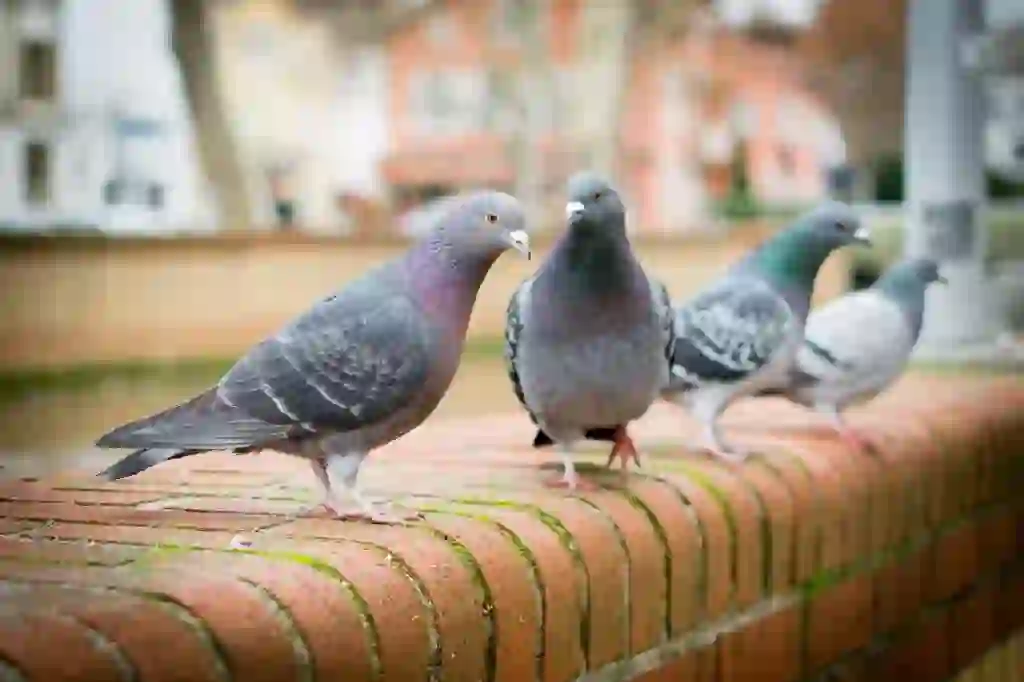
How Is a Pigeon Race Conducted?
Pigeon racing, which utilizes the homing instinct of pigeons and has been turned into a competitive sport, is held annually with many competitions. The competitions range from 100 to 1000 kilometers, and pigeons are tagged on their legs, released from a designated point, and their time is measured until they return to their nest, the finish line.
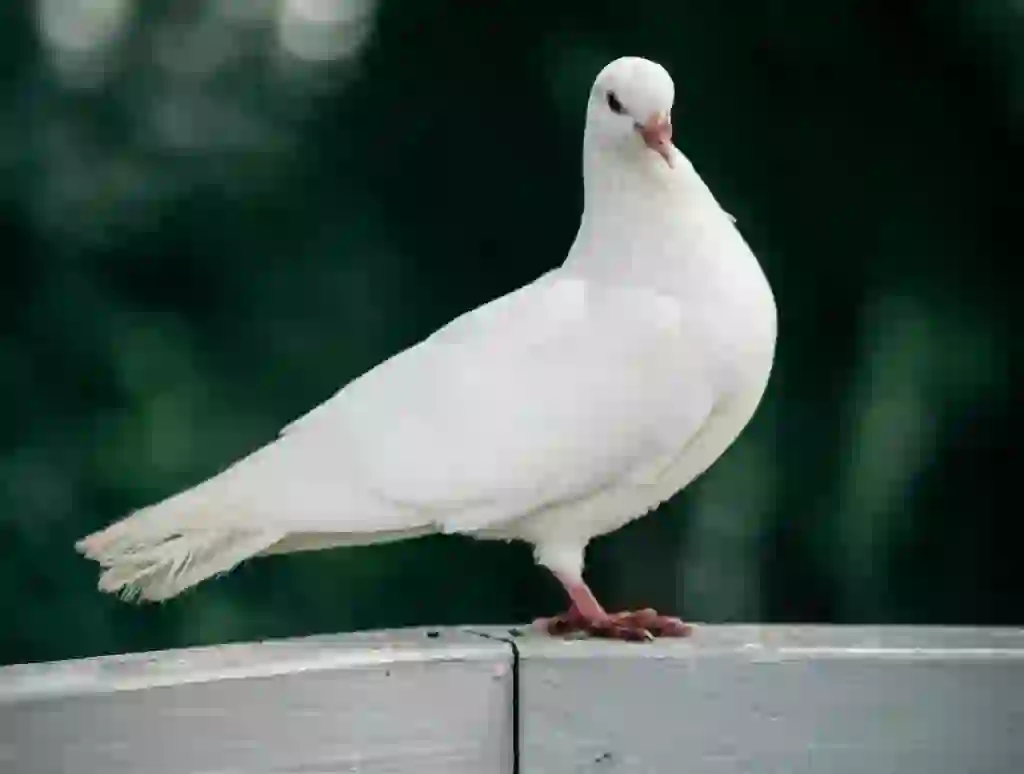
How Do Pigeons Call?
Feral pigeons coo with a 'croo-coo' or 'goroppo-goroppo' sound, while wood pigeons make a rhythmic 'deddey poppo' sound.
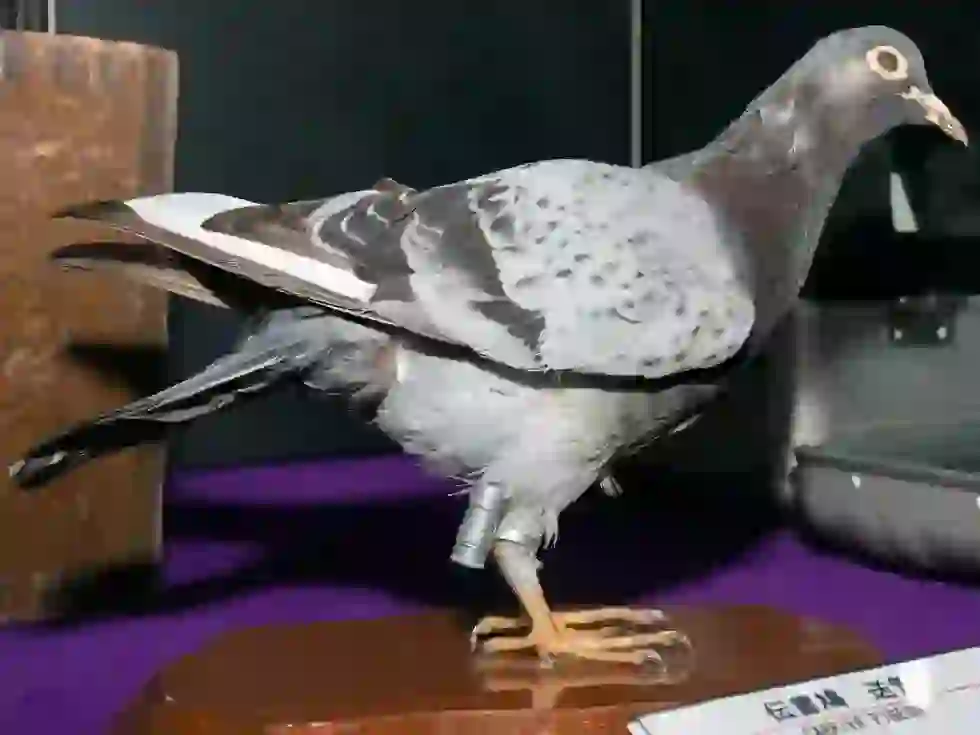
Why Are Pigeons Disliked?
Pigeons reproduce prolifically, entering the breeding season about half a year after birth, and breed almost all year round except for the hottest summer months, capable of laying eggs up to 7-8 times a year. Pigeons, with their strong reproductive ability, take up residence in parks, stations, home balconies, and parts of buildings, causing issues with droppings and noise, leading to their classification as nuisance birds.

Are There Any Beautifully Colored Pigeons?
Yes, there are many beautifully colored pigeons living around the world. I'll introduce them with photos!
In the jungles of Southeast Asia to Oceania, there are some very beautiful pigeons. The reasons for their colorful appearance are varied, but it is thought that due to the abundant fruits available as food and the ability to hide among tree branches and leaves, reducing predation risks, they have evolved to fully focus on attracting mates, resulting in colorful bodies.
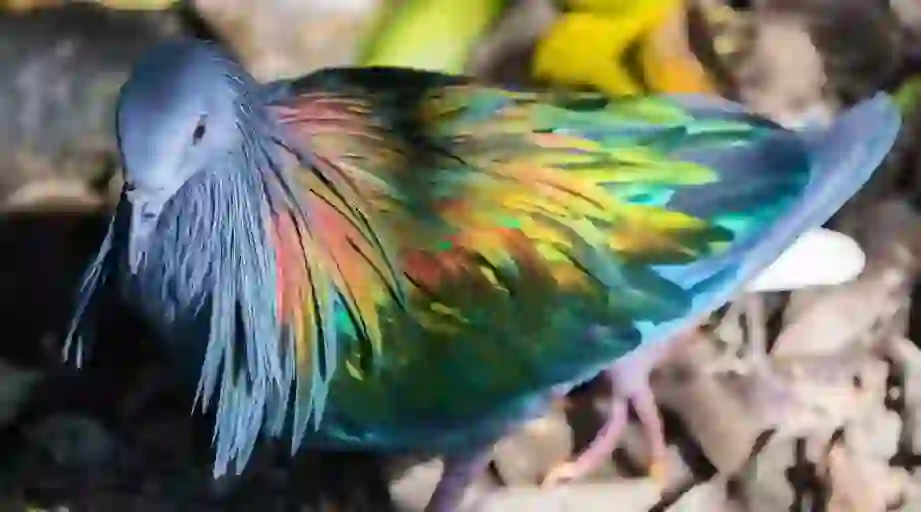
Are There Any Beautifully Colored Pigeons? Nicobar Pigeon
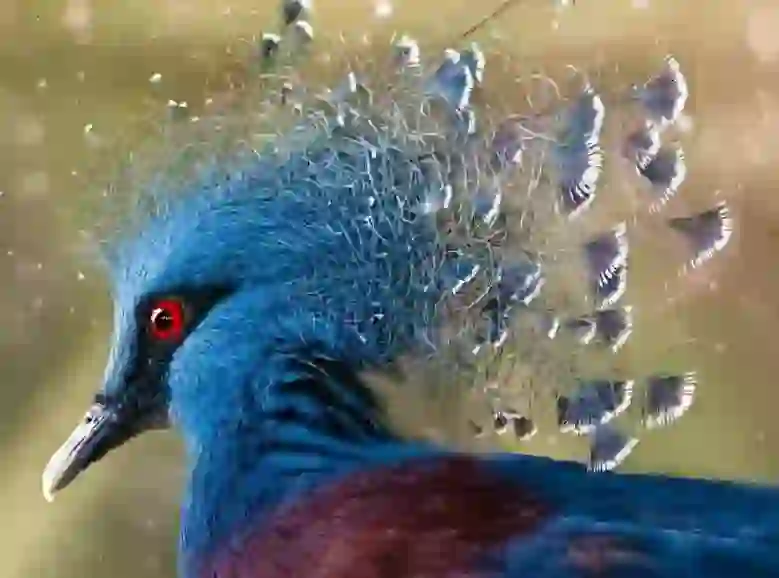
Are There Any Beautifully Colored Pigeons? Victoria Crowned Pigeon
* Improved Pigeon, a breed developed by humans for ornamental purposes, will surprise you with its elaborate design.
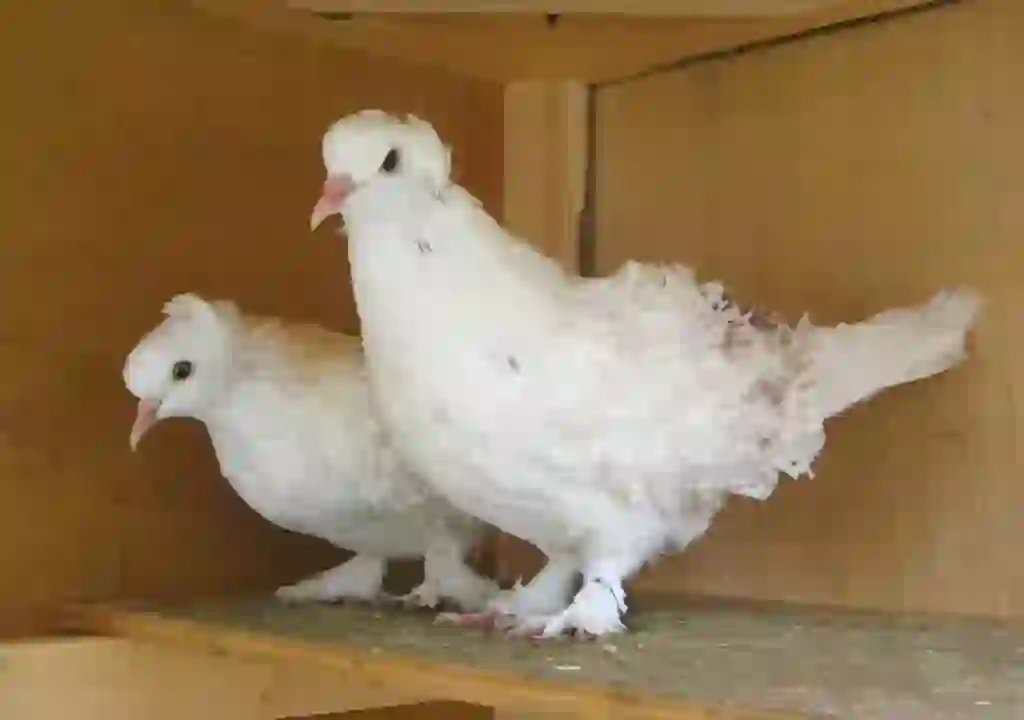
Are There Any Beautifully Colored Pigeons? Frillback Pigeon
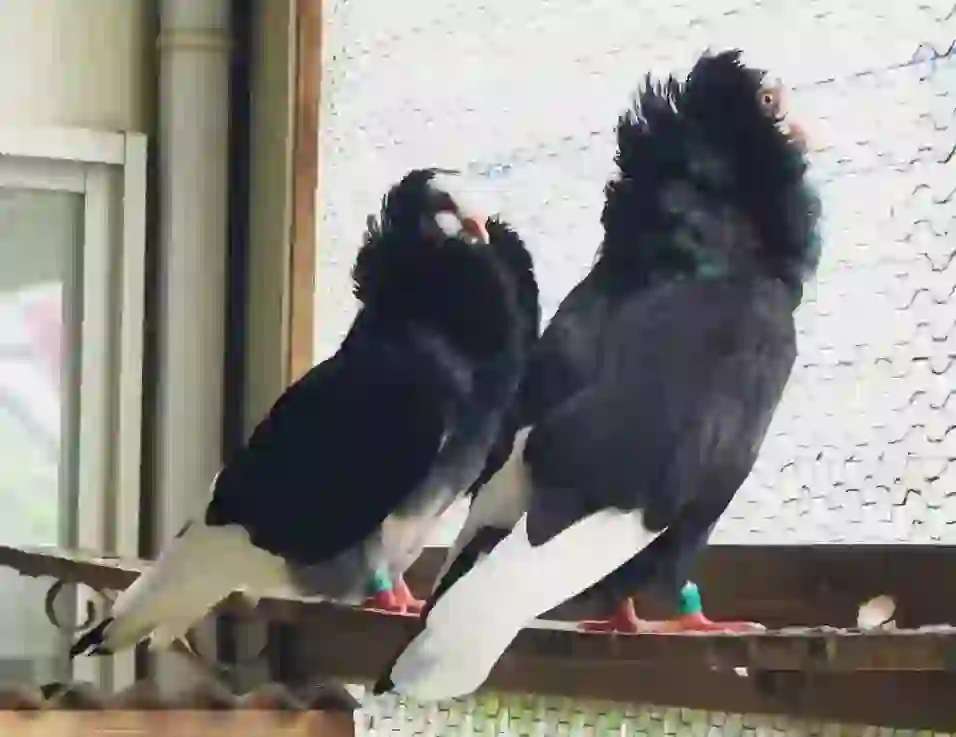
Are There Any Beautifully Colored Pigeons? Jacobin Pigeon
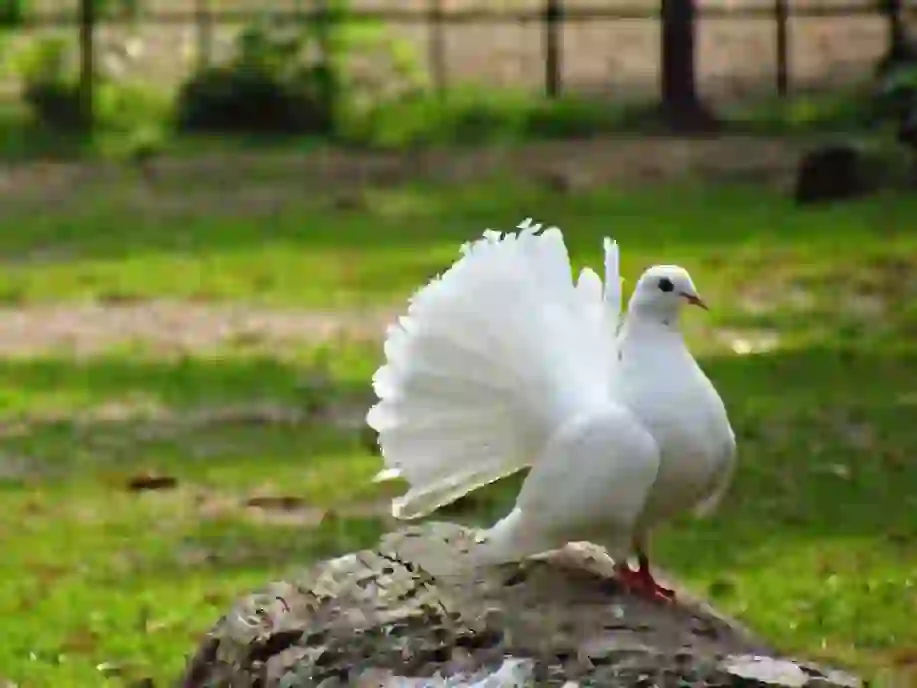
Are There Any Beautifully Colored Pigeons? Peacock Pigeon

Would you like to become a part of the 'Animalbook.jp'?
Turn your knowledge into Q&A and share it with the world. ※Publication will be activated after purchase. Let's share information together!
Pigeon Type of List
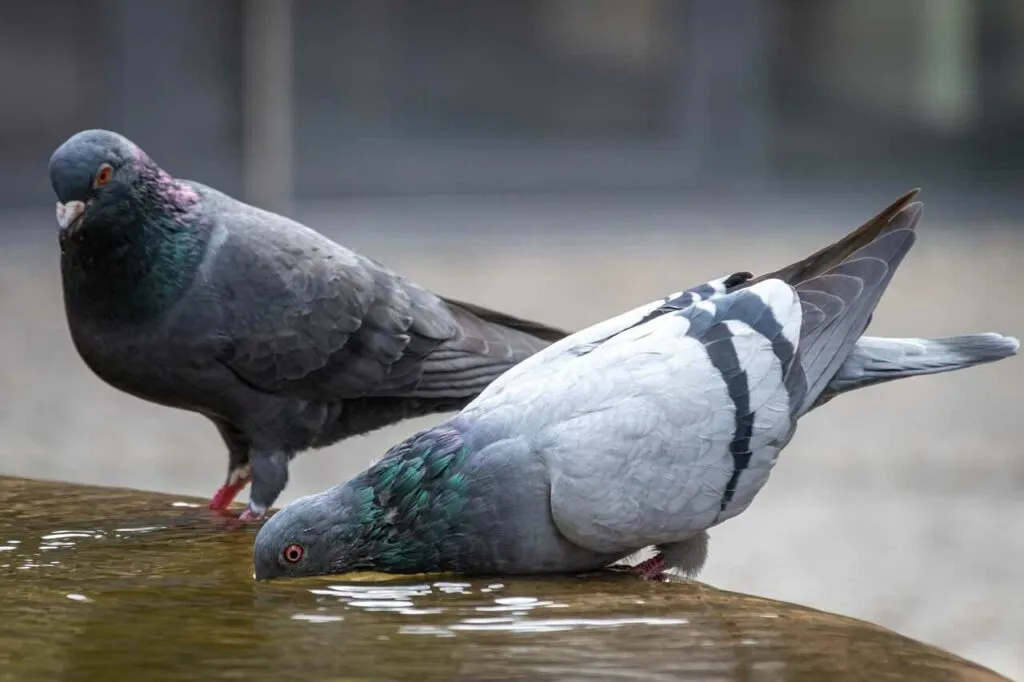
Rock Pigeon Genus : Approximately 40cm
Inhabits all over Japan from central Honshu southwards. The red-crowned pigeon of the Ogasawara Islands is designated as a natural monument. Species (Crow Pigeon, Red-crowned Crow Pigeon, Yonakuni Crow Pigeon, Ryukyu Crow Pigeon, Ogasawara Crow Pigeon)
Wood Pigeon Genus : Approximately 33cm
Inhabits all over Japan. The pale-capped pigeon found in northern Chiba Prefecture, southwestern Ibaraki Prefecture, and eastern Saitama Prefecture is designated as a natural monument. Species (Wood Pigeon, Ryukyu Wood Pigeon, Pale-capped Pigeon ※There is also a theory that the Pale-capped Pigeon is an invasive species)
Green Pigeon Genus : Approximately 33cm
Inhabits Honshu, Shikoku, and Kyushu, migrates to Honshu in summer from Hokkaido. Species (Green Pigeon, Ryukyu Red-bellied Green Pigeon, Intermediate Red-bellied Green Pigeon)
Red Pigeon Genus: Approximately 23-25cm
As winter migratory birds, they come to western Japan. Breeds from central China across East Asia. Species (Red Pigeon)
Gold Pigeon Genus: Approximately 25cm
Inhabits the southwestern islands south of Miyako Island. Species (Ryukyu Gold Pigeon)
Rock Pigeon (Feral Pigeon) : Approximately 33cm
Inhabits from Hokkaido to Okinawa (excluding the Ogasawara Islands)
Information
Congratulations! You are the first commenter!

Create Your Favorite List!
Pigeon
Save the animals you love! Build your own list to quickly revisit your favorites later.

Would you like to leave a comment?
※Please note: This is for the purchase of rights to post comments within the article.
Find Your Favorites!
Our shop offers a unique and attractive selection of goods themed around various animals.
Pigeon References
Pigeon Introduction of media used
出典:https://pixabay.com/videos/id-29033/
出典:https://pixabay.com/videos/id-39264/

出典:https://pixabay.com/images/id-5597089/

出典:https://unsplash.com/photos/zmomoe5SQoY

写真提供:「yotty」様 この画像は、著作者に掲載許可をいただいたものです。許可なく転載することを禁止します。

出典:https://unsplash.com/photos/cjGH6Eb-sQU
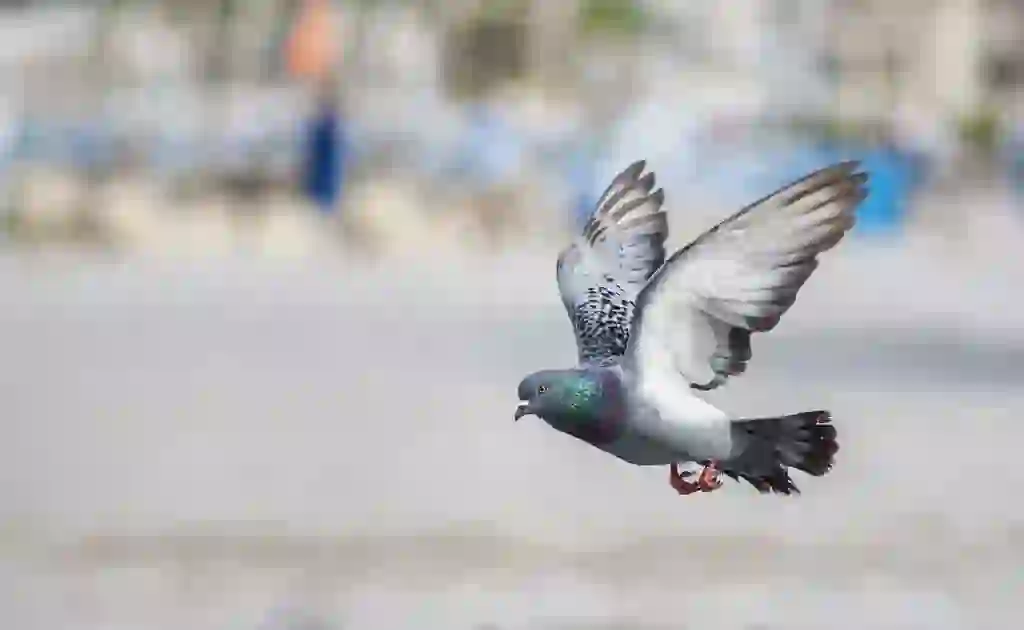
出典:https://pixabay.com/images/id-2523828/

出典:https://unsplash.com/photos/k8GLkbYuRjE

出典:https://unsplash.com/photos/5GFLBfzkeCU

出典:https://commons.wikimedia.org/wiki/File:Racing_Pigeon.jpg

出典:https://pixabay.com/images/id-5661389/

出典:https://pixabay.com/images/id-3047562/

出典:https://unsplash.com/photos/hQ4qByMF9zM
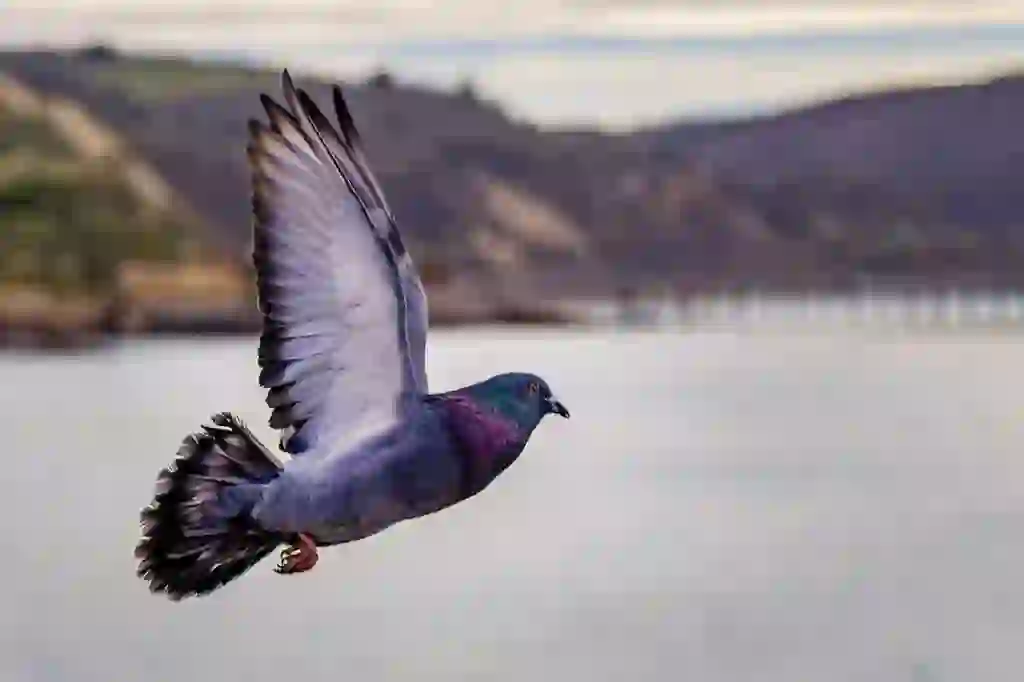
出典:https://unsplash.com/photos/WyDXNgmq8RE

出典:https://pixabay.com/images/id-2655473/
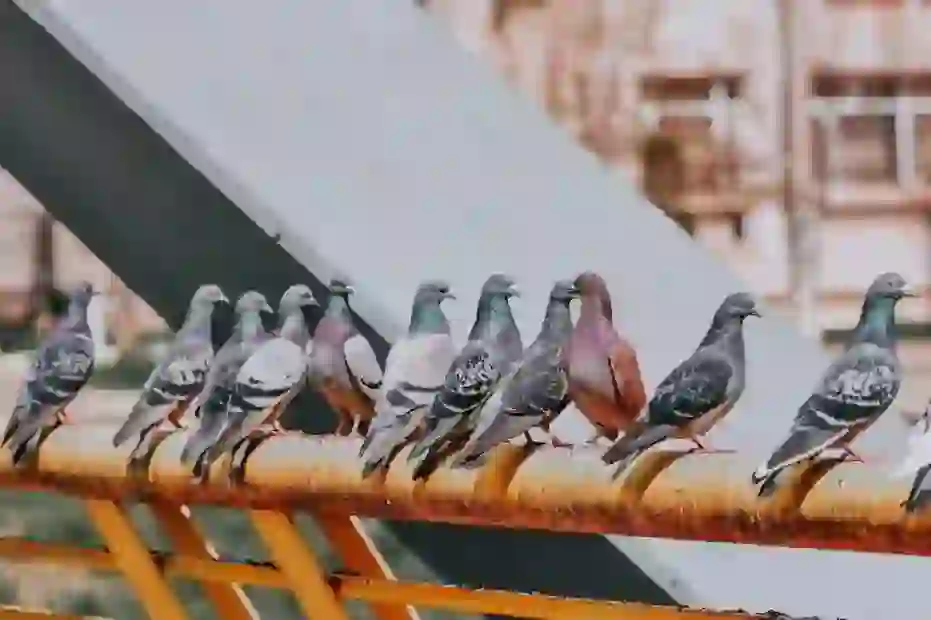
出典:https://pixabay.com/images/id-6188389/

出典:https://pixabay.com/images/id-3283952/

出典:https://pixabay.com/images/id-3264035/

出典:https://pixabay.com/images/id-4335011/

写真提供:「やーと。の悲喜交々鳥日記」様 この画像は、著作者に掲載許可をいただいたものです。許可なく転載することを禁止します。

写真提供:「やーと。の悲喜交々鳥日記」様 この画像は、著作者に掲載許可をいただいたものです。許可なく転載することを禁止します。

出典:https://pixabay.com/images/id-2687489/

Help Enrich Our Animalbook.jp with Your Media!
We are constantly looking to expand and enrich our Animalbook.jp with amazing photos and videos of animals. If you have any media that you'd like to share, please contribute and help us showcase the beauty and diversity of the animal kingdom. Your submissions will be credited and featured in our encyclopedia, reaching a wide audience of animal lovers.


















